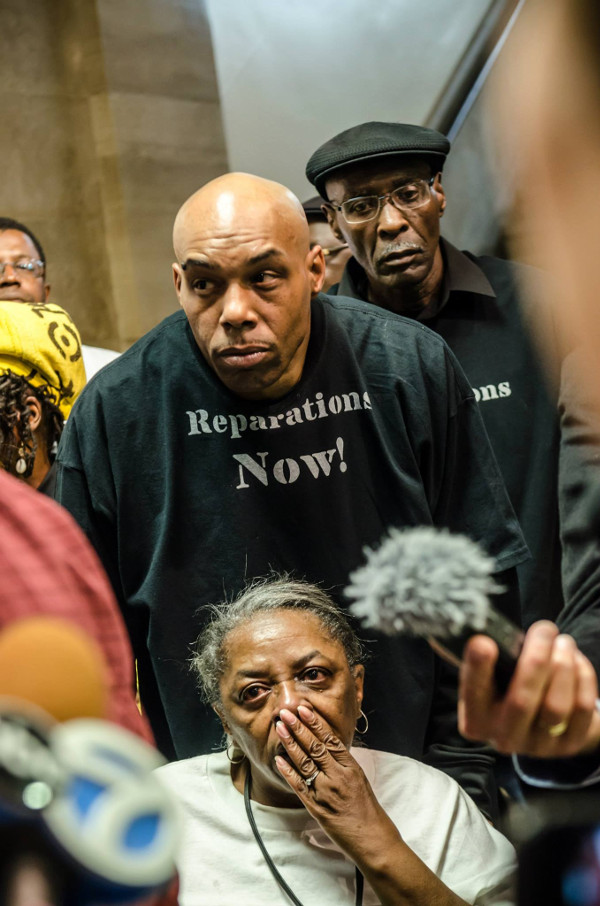
PHOTO/SARAH JANE RHEE
CHICAGO, IL — Chicago is known as the torture capital of the U.S. Rebuked by the United Nations Commission on Torture, the subject of a Guardian series on the Homan Square “black site,” Chicago has been targeted by a large coalition of organizations to acknowledge the years of brutality committed by Police Commander Jon Burge and a cohort of other officers. Burge’s “Midnight Crew” beat, suffocated, electroshocked, burned with a hot radiator, and choked prisoners, documented well by John Conroy in his many Chicago Reader articles.
The campaign for justice for the torture victims reached a milestone May 6, 2015: the Chicago City Council voted unanimously for a reparations ordinance, which recognizes the torture and grants up to $5.5 million to the Burge victims. It also provides for educational benefits, emotional counseling, and other benefits for the survivors and their families, and that Burge era torture will be part of the Chicago Public Schools curriculum.
Jon Burge was a police Commander in the 1970s and 1980s, when he and other officers tortured prisoners to extract confessions. This did not take place in a vacuum: most of the heavy industrial infrastructure of Chicago has gone elsewhere, while electronics has penetrated every segment of the economy. The result is an economic wasteland for most, side by side with the accumulation of wealth by the corporate masters of the area and a rising police state for the rest. Chicago denied the torture, though year after year survivors were released after confessions were discredited and the city paid millions of dollars in judgments in individual civil suits. For years, the Chicago Torture Justice Memorial has documented and publicized these cases with public events, readings and exhibits.
Complementing the decades long struggle, Project NIA launched an audacious initiative: Young people from Chicago reprised the “We Charge Genocide” campaign from 60 years ago, taking this charge against the city of Chicago to the United Nations in November, 2014. They focused on the Burge torture victims as well as police killings of young Black men. This international embarrassment may have forced Chicago’s hand, as Mayor Emanuel ran for re-election. After a majority of city councilmen agreed to call for a hearing in the council finance committee, Mayor Emanuel and movement organizations worked out a deal to support the ordinance, paving the way for the May 6 vote.
There is a real victory here. That is, that the people are becoming aware. After years of denials, in the face of a consolidating police state, the first official municipal recognition of torture in the US took place. It is the state’s de facto recognition that a society presiding over an economic wasteland and based in private, corporate ownership has nothing to offer the dissatisfied but torture, prison and death.
The growing police state marks the last stand of an economic system that cannot provide jobs or a decent life for the majority of workers. We must continue to fight every attack on our liberties, recognizing that the very police state that tortures and kills the poorest workers is what is standing between us and a new restorative, reparative society without police terror, one that insures that everyone’s needs will be met.
